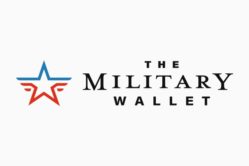Table of Contents
It’s a big job, so many of us put off retirement planning.
When you have a mortgage, car payments, insurance premiums, children, and so many other demands, retirement planning may seem impossible.
But help is abundant:
- Tax-friendly accounts can give you an incentive to save. These incentives can pay off on your next tax return.
- Smart investments and contributions from your employer can enhance your savings.
Best Types of Retirement Accounts
In this post, we’ll look at some of the most common tools you can use to build a retirement plan that grows without you having to deposit every penny.
Work with a retirement planner to ensure you’re getting the most out of these tools for the best results. And, start planning now.
Employer-Sponsored Plans
Decades ago, many employers managed pension plans on behalf of their employees. Some employers still offer pensions, but not many. Retirement planners call pensions “defined benefit plans.”
Participation may be mandatory if your employer manages a pension, and the pension should be a helpful source of income later in life.
Chances are, though, your employer offers only “defined contribution plans.” You, as an employee, can control these plans. If you have access to one, you can start retirement planning immediately by contacting your human resources department.
Your 401(k) Plan
The most commonly defined contribution plan is the 401(k). With help from your employer’s human resources staff — or without help, if your employer has an online benefits portal — you can direct money from your regular paychecks into your company’s 401(k).
Many companies will match your 401(k) contributions up to a certain percentage. If you see “company match” in your HR paperwork, by all means, sign up. Try to save at least the amount your company matches.
This will double your deposits. It is essentially free money to fund your future, and you’ll be well on your way to a more stable financial future.
Some 401(k) FAQs
What are the 401(k) tax Implications? You’ll be saving for your future but also helping in the present because your 401(k) contributions will not be taxed as regular income, up to a limit. The limit is reset each tax year. In 2024, you can shield up to $23,000 of your income from taxation ($30,500 if you’re 50 years old or older) by depositing it into your 401(k) account. You’ll pay taxes on that income when you withdraw money later in life.
What happens if you change jobs? The money in your 401(k) is your money, but it’s held by your employer or a third party on behalf of your employer. When you change jobs, you can roll the money over into your new employer’s 401(k) program or your individual retirement account (IRA), which we’ll see below.
Can I access 401(k) money? The money’s yours, but you shouldn’t plan to access it until retirement. There are ways to withdraw money from your 401(k) before retirement, but you’ll face a penalty because of the tax break you got when you saved the money, to begin with, and you’ll have to pay taxes on the money. In most cases, your employer will let you borrow against the funds if you get into a bind.
What happens to the money in the 401(k)? Most employers work with investment firms to manage employees’ 401(k) contributions. You have some control over where and how the money is invested. Many retirement planners like target-date funds, which change investment strategies as you get closer to retirement age. For example, when you’re five years away from retirement, a target-date fund will invest your money conservatively to guard against losses.
Plans Similar to 401(k)
If your employer doesn’t offer a 401(k) it may offer something similar:
- 403(b): Employees of non-profit organizations, including schools and hospitals, may have a 403(b) plan instead of a 401(k) plan. You’ll get the same result using a 403(b) as you would a 401(k).
- 457: Also very similar to 401(k); typically offered by governmental agencies.
- Roth 401(k): A Roth 401(k) plan defers your tax break until you withdraw funds from your 401(k) later in life. Your annual contributions will not be tax-sheltered.
- IRAs: Some smaller employers prefer to direct retirement contributions directly into their employees’ Individual Retirement Accounts which the employee typically manages. IRAs have different tax rules. We’ll get into the different kinds of IRAs next.
Individual Retirement Accounts
An Individual Retirement Account (IRA) works like a 401(k) plan, except you own and manage everything about the account yourself.
Anyone old enough to work can open an IRA with a bank, credit union, or broker. Each year you can contribute a certain amount of money into your IRA tax-free. In 2024, IRA owners can deposit up to $7,000 ($8,000 if you’re 50 or older) into an IRA.
With a traditional IRA, you deposit money tax-free, up to the IRS’s annual limit, but pay taxes on the money when you withdraw it later in life, after age 59-½. (If you withdraw funds early, you’ll face a 10 percent penalty.)
Since you own and manage your own IRA, these accounts serve as a home base for your retirement planning. For example, when you leave an employer, you can roll your 401(k) contributions into your IRA.
As these accounts have grown in popularity, they have also grown more diverse. Variations of the IRA include:
Roth IRA
Roth IRAs, named after Sen. William Roth, who sponsored the 1997 legislation creating them, reverse the traditional IRA tax situation: Rather than depositing pre-tax money, you contribute money after it’s been taxed, and there are many options for how to invest Roth ira funds.
In exchange for the immediate tax break, you gain a future tax advantage: When you withdraw money later in life, you won’t be taxed on the money.
Spousal IRA
If you do not work, the IRS will allow your working spouse to contribute his or her earnings into a separate IRA for you. You’ll have to file a joint tax return for this to work. Contribution limits mirror traditional IRA limits.
SEP IRA
Your employer may set up a SEP IRA — the SEP stands for simplified employee pension — as an alternative to a 401(k) plan. Like a traditional IRA, your deposits will not be taxed but your withdrawals will be taxed at the ordinary rate later in life.
The good news here is: The deposit maximums are higher than a traditional IRA. Your employer could put 25 percent of your income, up to $56,000, into your SEP IRA tax-free each year.
The bad news: You can’t submit money from sources other than your employment into this kind of IRA.
Simple IRA
A Simple IRA isn’t all that simple. The word “simple” is an acronym for Savings Incentive Match Plan for Employees.
These plans mimic a 401(k) plan’s ability for an employer to match employee contributions: In fact, employers must match your contributions up to 3 percent. Employers can also make unmatched contributions, meaning they contribute up to 2 percent of your earnings even when you don’t.
These plans currently cap tax-deferred deposits at $13,000 yearly ($16,000 if you’re 50 or older).
Accounts Options for Self-Employed People
From an employer’s point of view, the last two options above — SEP IRA and Simple IRA — have distinct advantages for the self-employed and small business owners.
You can contribute to your retirement as the employer and the employee within certain limitations. For example, if you own a company with a handful of employees and set up a SEP IRA for yourself, you have to offer and contribute to a SEP IRA for your other qualifying employees.
Other retirement account options for independent contractors, self-employed, and small business owners include:
Solo 401(k):
If you do not have any employees, you can set up a Solo 401(k) and contribute up to $56,000 tax-free as an employer and employee. (The amount is so high because you’re contributing money as an employer and an earner.) You can also include your spouse if he or she earns income from your business. Setting these up can be a little tricky: You’ll need an IRS Employer Identification Number and you’ll need to work with a broker.
Traditional or Roth IRA:
Since you own an IRA and it’s not associated with an employer, a Traditional or Roth IRA account would make sense for self-employed people, especially if you’re saving less than $6,000 a year. However, you can save more tax-free by setting up a SEP IRA or a Solo 401(k).
Regular savings account or taxable brokerage account:
Some independent contractors prefer a regular savings account. It’s better than nothing, but the tax breaks you get from more advanced options are typically worth the trouble to set them up, especially when you’re paying those sky-high self-employment taxes.
What to Do With Your Retirement Accounts
When you’ve set up a retirement account and make regular contributions, you’re officially planning for retirement while also saving money on taxes. It’s a win-win.
But a retirement account, whether a 401(k) or some kind of IRA, is just that: an account. As with a checking or a savings account, your retirement account means very little if its balance isn’t healthy and growing.
Making tax-deferred contributions into your retirement account is only half a plan. Tax laws also allow money in your account to grow tax-free. This can add a third dimension to your ability to save for the future.
Investing 401(k) Money
With a 401(k) or a similar account, your employer will work with an investment firm to direct your contributions into mutual funds, stocks, or bonds. Your employer controls a lot of the process, but you can usually decide how your money is invested.
It’s your money, and you should feel responsible for it. Read your annual statements and ask questions to your plan administrator as needed.
Keep in mind: Investing is a long-term process. If your holdings lose value this year, don’t freak out, especially if you’re young and have decades to go before retirement.
Still, if you want more control over how your money is invested, you could roll the funds into your own IRA, giving you more control over investing.
Investing IRA Savings
Since you own and manage your own IRA, you can directly control how you invest the money. Here are some common approaches:
- Stocks: Though potentially volatile, many IRA owners like investing their savings in stocks because of the potential for a high rate of return. Earning 8 percent on your savings in one year without paying capital gains is tempting.
- Mutual Funds: A safer bet, mutual funds limit your potential for loss while also taming your potential for gain. Retirement planners advise anyone, regardless of age, to mix in some mutual fund investments at all times. As you retire, you should depend even more on safer investments.
- CDs: Since you don’t plan to touch your IRA money anyway, a certificate of deposit — which requires you to leave the money alone for a specific amount of time — dovetails nicely into your IRA. Better yet, create a ladder of CDs to optimize compounding interest.
Someone who doesn’t know much about investing and doesn’t have time to learn should let a professional manage his or her IRA investing. Or, you could go this route:
- Robo-advisor: You can open an IRA within a leading robo-advisor such as Wealthfront or Betterment. You can set your own tolerance for risk, which should reflect your age and inclinations. Then, the robo will invest your tax-sheltered money for you, primarily in exchange-traded funds (ETFs), which resemble mutual funds.
A Roth IRA is a potent tool because your money can grow tax-free, and you can withdraw from those earnings tax-free during retirement — this is a potential for incredible savings.
Other Retirement Planning Tools
For many of us, retirement planning begins and ends with tax-friendly accounts fed by regular contributions and gains from wise investments.
Of course, you can also dig deeper in the retirement planning toolbox as your situation requires it:
- Social Security: For nearly a century, Social Security has been a staple of retirement planning for Americans. Your political outlook may influence your willingness to depend on Social Security. Some pols claim the fund is doomed while others say it’s in great health. What does the money say? The variety of tax breaks you can get for retirement savings means Uncle Sam wants you to save.
- Thrift Savings Plan: Federal employees, including members of the armed services, participate in this defined benefit (pension) plan, which has more than $5 billion in assets and is designed to mimic private sector 401(k) plans. Federal employees can opt into a TSP, directing 3 percent of their annual pay into the fund.
- Annuities: An annuity, a life insurance product, is an alternative to a pension. You’ll fund the annuity with a large, up-front lump sum. Later in life, the annuity will pay you a regular income, guaranteed, until you die or until you reach an advanced age specified in the policy, even if your payouts surpass your initial payment.
- HSAs: On the surface, health savings accounts have almost nothing to do with retirement. Yet people are contributing money each year tax-free with plans to spend the money on medical expenses during retirement. You’ll need a high deductible health insurance plan to make it work, and you can’t have an HSA if you have Medicare.
- Your home: Every time you pay a mortgage, you’re potentially putting that money toward retirement when you consider owning your own home means not paying rent when you’re retired. Or, you could sell the home when you retire and live off the proceeds.
- Life insurance: Whole life insurance policies include a cash value you can use later in life. More advanced policies like universal life let you borrow against the death benefit.
Bottom Line: Get Started and Get Help
Retirement planning tools seem to grow more diverse, adaptable, and powerful every few years. They also grow more complicated. But you don’t have to be an expert on these tools to start using them.
Like any building project, you’ll need more than tools to build a substantial retirement fund. You’ll also need building materials — also known as money in this case — and you really can’t start compiling that soon enough.
If you haven’t already done so, stop by your company’s HR office and opt into a 401(k) or its equivalent so you can start saving, tax-deferred, and capturing your company’s match.
When you’re ready for the next step, check out a post like this one for ideas. And, unless you’re 100 percent sure what you’re doing, find a good retirement planning expert to work with.
Retirement planning is a multi-million industry for a good reason: retirement planning is complicated, and people need help. The money you spend on fees will pay off when you can enjoy a steady income without working.



About the comments on this site:
These responses are not provided or commissioned by the bank advertiser. Responses have not been reviewed, approved or otherwise endorsed by the bank advertiser. It is not the bank advertiser’s responsibility to ensure all posts and/or questions are answered.